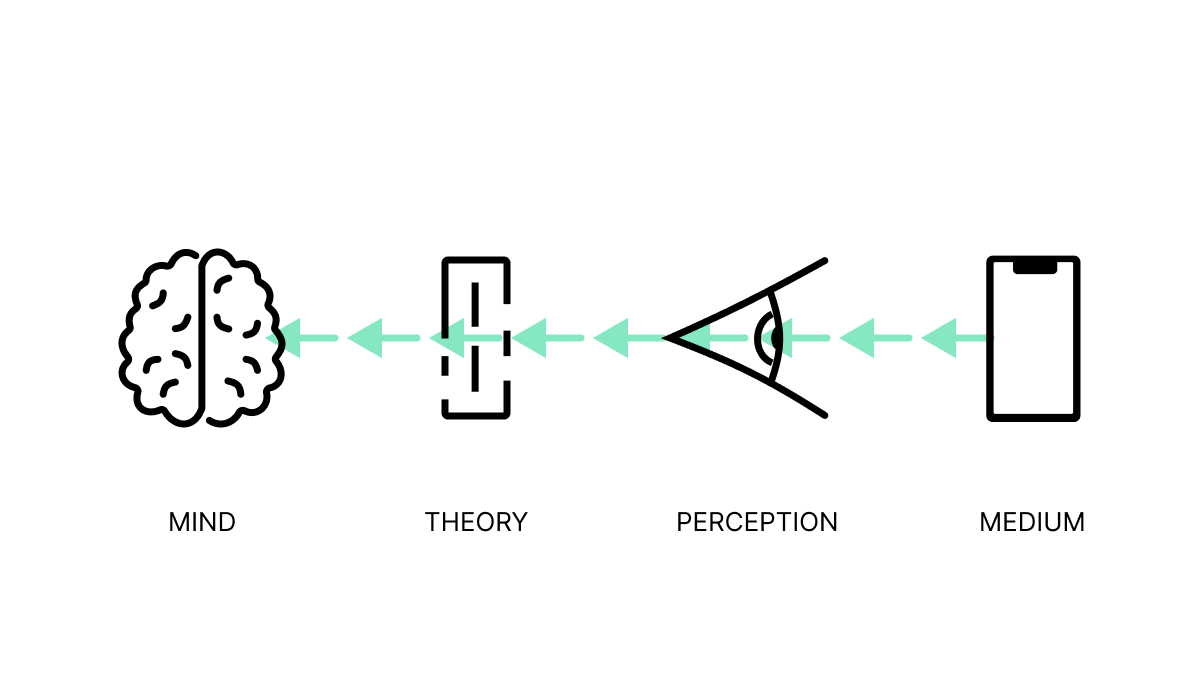
A theory of design - what design does
Design is a widely used term. But unfortunately it’s a bit vague. This is my attempt to explain what design is, and what it does. Hopefully in a way that makes the term a little more useful.
We experience the world through our senses. Which are quite blunt as instruments. What your senses pick up depends to an uncomfortably large degree on what we already think about the world. Theory comes first.
Here’s a simple example to illustrate what I mean:
When a magician performs a card trick your eyes are telling you that cards appear out of thin air. Of course you know that is not what is happening. When the magician performs, we know it’s a trick. But we still can’t see how it’s done.
Unless we learn to do the trick ourselves, then suddenly we can see how it’s done. You have to know how it works first, to perceive what is really happening.
A part of magic is the deliberate attempt to confuse our senses, but this is true for all observation. If you don’t know what you’re looking at, you don’t perceive how it really is.
Another good example is seeing faces in the clouds. We all know they are not there. With a quick glance in a shady neighbourhood, a moving shadow can easily scare us.
You can quite literally not trust your own two eyes. You need to know what to look for.
”All observation is theory laden”
Karl Popper
Design works at an even more fundamental level. We are not just perceiving the world around us, but also trying to predict what happens next. What does this button do? What happens when I push or pull this door? Our brains are constantly occupied trying to predict the future, moment to moment.
These predictions or expectations are guesses that the brain is making on what will happen next. (I almost used the word bets, which might be even more descriptive, because you might make more than one.)
In pop science they’re called mental models, but the term is overused and carries a lot of preconceptions, so I will stick to guesses.
When we see faces in the clouds, we are projecting our guesses onto the world. Humans love seeing faces, so most random patterns will look like one.
These guesses in your mind are what we as designers are trying to shape.
Not the object, or software, your perceive. That is just the medium of communication. But the guess you’re making in your head. The layout, the color, the architecture, all of that is just a means to an end.
We want you to experience the world with a specific guess in your mind. With most design, we want you to guess so specifically that you can see how the card trick is done.
The thing you’re reading this on. The steering wheel in your car. The pattern of class or plastic on your phone. They are designed to communicate a way of thinking. They are designed to shape the guess inside your mind.
If the guess is right, your expectation is fulfilled, and it feel like something works.
If the guess is wrong, you have to rethink, which costs a little bit of effort. A little bit of friction. And it will feel strained, or awkward.
The art of design, like choosing vivid colors and fonts. And the craft of design process, like researching jobs-to-be-done or user context. Is all done to design the right guesses in the minds of the users.
This is what design does: we’re shaping guesses.
This is why it looks easy, or obvious, when it’s done well. Your mind is helped to make the right guess every step of the way.
But when it’s not done well, or rushed, it’s feels awkward or not quite right. Or worse, you make errors and blame yourself.
“Good design looks easy. Like great athletes, great designers make it look easy. Mostly this is an illusion. The easy, conversational tone of good writing comes only on the eighth rewrite.”
Paul Graham